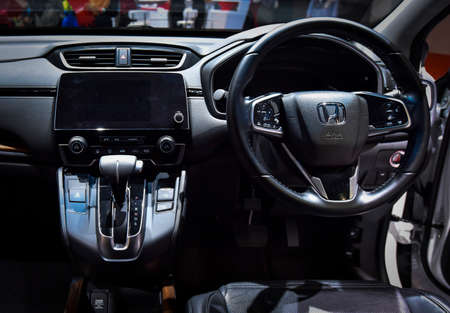1. Introduction: The Electric Revolution on British Roads
In recent years, the UK has witnessed a remarkable surge in the number of electric vehicles (EVs) gliding along its historic motorways and winding country lanes. As Britain sets ambitious targets to phase out petrol and diesel cars by 2030, more drivers are making the switch to greener transport options. This electric revolution is not just about reducing carbon emissions; its also transforming how we think about travel, from daily commutes in bustling cities like London and Manchester to self-drive adventures across the Lake District or the Scottish Highlands. However, as EV ownership grows, understanding the real costs associated with charging becomes ever more crucial for both seasoned motorists and those considering their first electric car. With charging infrastructure expanding rapidly but varying significantly across regions, knowing where, when, and how much it costs to charge an EV can make all the difference—especially when planning a road trip or camping weekend away. This article delves into the realities of charging costs across Britain, helping you navigate this brave new world with confidence and clarity.
2. Types of Charging Across Britain
If you’re planning an electric road trip from the rugged cliffs of Cornwall up to the windswept streets of Inverness, knowing your charging options is essential. The UK boasts a growing and diverse charging infrastructure, but it’s not a one-size-fits-all situation. Here’s a breakdown of what you’ll find as you traverse Britain’s scenic routes.
Public Charging Points
Public chargers are the backbone of EV travel across Britain. These are commonly found in supermarket car parks, public car parks, retail centres, and increasingly at motorway service stations. Most public charging points are either fast (7-22kW) or rapid (43-350kW), with payment methods ranging from contactless cards to app-based subscriptions. Prices can vary considerably based on location and provider.
Typical Public Charging Locations:
| Location | Charging Speed | Availability |
|---|---|---|
| Supermarkets | Fast (7-22kW) | Widespread in urban/suburban areas |
| Motorway Services | Rapid (50-350kW) | Main trunk routes; variable in rural areas |
| Retail Parks | Fast/Rapid | Common in cities/towns |
Private/Home Charging
For many British EV owners, private home charging remains the most convenient and cost-effective option. Using a dedicated home wallbox (typically 7kW), you can charge overnight using off-peak electricity tariffs. However, this isn’t always possible for those living in terraced houses or flats without driveways—a common scenario in many British towns and cities.
Key Points:
- Home charging is usually cheaper per kWh than public options.
- Government grants may be available for installation.
Rapid Charging Networks
Bristling with high-powered connectors, rapid chargers are designed for drivers needing a quick top-up on longer journeys—think holiday runs to the Lake District or business trips to Edinburgh. Providers like Gridserve, InstaVolt, and BP Pulse offer extensive coverage along major A-roads and motorways.
| Provider | Cities/Regions Covered | Max Output (kW) |
|---|---|---|
| Gridserve | M1/M6 corridors, South East, Midlands | 350 |
| InstaVolt | Cornwall to Scotland, major service stations | 120+ |
| BP Pulse | Nationwide, urban & rural locations | 150+ |
A Patchwork Quilt of Options
The reality is that charging infrastructure varies widely from region to region. While London, Manchester, and Birmingham boast dense networks of all three types of charging options, rural areas—like parts of Wales or the Scottish Highlands—can still feel like an EV wilderness. Planning ahead is crucial for stress-free travels across the UK’s stunning countryside and vibrant cities alike.

3. Regional Cost Variations
If you’re planning a road trip across Britain in your electric vehicle, it’s essential to understand that charging costs and availability aren’t uniform from one region to another. From the rolling hills of Wales to the bustling streets of London, and from the rugged landscapes of Scotland down through England’s heartlands, every area offers a different charging experience—sometimes even within a single city borough.
Comparing Charging Rates Across Regions
The differences in charging rates can be quite stark, largely influenced by local infrastructure investments, government incentives, and the presence of private charging networks. While some regions offer cheaper public chargers thanks to council subsidies or green initiatives, others—especially in densely populated urban centres—tend to have higher per-kWh prices.
| Region | Average Cost per kWh (Public) | Rapid Charger Availability |
|---|---|---|
| England (outside London) | £0.55 | Moderate |
| Scotland | £0.45 | High |
| Wales | £0.50 | Low-Moderate |
| London Boroughs | £0.60+ | Very High |
England vs Scotland: A Tale of Two Approaches
In Scotland, there’s a strong push for electrification supported by ChargePlace Scotland, which often leads to lower costs and better rapid charger coverage—ideal if you’re wild camping in the Highlands. By contrast, England’s patchwork of providers means prices can jump considerably between counties, with rural areas occasionally lacking reliable rapid options.
The Unique Case of London Boroughs
If your journey takes you into London, be prepared for both an abundance of charging points and some of the highest rates in the UK. Each borough manages its own network, so prices and payment systems vary widely—something to keep in mind if you’re weaving through zones or parking up for a night under canvas near the Thames.
Welsh Charging: Off the Beaten Track?
Wales is making strides but still lags slightly behind England and Scotland when it comes to widespread fast-charging options. If you’re touring Snowdonia or Pembrokeshire, plan ahead; public chargers may be few and far between, though rural hospitality sometimes means finding a plug at your campsite or B&B.
4. The True Cost Beyond the Price per kWh
When planning an electric road trip across Britain, it’s tempting to focus solely on the advertised price per kWh at charging stations. However, the real costs run deeper and can catch even seasoned EV drivers off guard. British charging networks often apply a range of additional fees that significantly affect your total spend—sometimes even more than the electricity itself.
Understanding Typical Extra Charges
Let’s break down the most common supplementary costs you’ll find at public charge points across the UK:
| Charge Type | Description | Estimated Range (GBP) |
|---|---|---|
| Connection Fee | A flat fee applied when you plug in, regardless of how much you charge. | £0.50 – £2.00 |
| Parking Charge | Hourly or minute-based parking fees, especially in city centres or retail parks. | £1.00 – £4.00/hr |
| Subscription Plan | Monthly membership for lower per-kWh rates or access to exclusive chargers. | £6 – £20/month |
| Overstay Penalty | Fines for not unplugging promptly after charging is complete. | £10 – £12/hr (after grace period) |
The Small Print That Packs a Punch
Many British motorists are caught out by these hidden extras, especially connection fees and overstay penalties. For example, plugging in just for a quick top-up can still incur the same flat connection fee as a full charge. In busy areas like London or Manchester, parking charges can add up rapidly—sometimes costing more than the electricity itself if you’re parked for a couple of hours during peak times.
Subscription Plans: Are They Worth It?
If you’re a regular charger—say, someone exploring the Lake District every weekend—a monthly plan might offer savings through reduced per-kWh rates or waived connection fees. But occasional users might find these subscriptions unnecessary, as pay-as-you-go options could work out cheaper overall.
Quick Tip for Savvy Travellers:
Before setting off, use apps like Zap-Map or Electric Juice to compare not just kWh prices but all associated fees at your planned stops. It’s the best way to avoid surprises and keep your adventure on budget.
5. Home Charging Versus Public Networks
For many UK EV owners, the daily question is whether to top up at home or rely on the public charging infrastructure. Each option comes with its own set of costs and practicalities, influenced by location, lifestyle, and vehicle usage. Lets delve into a direct comparison that highlights what matters most for drivers planning cross-country adventures or simply commuting in and out of town.
The Essentials: Cost Breakdown
| Home Charging | Public Charging Networks | |
|---|---|---|
| Average Cost per kWh (2024) | £0.28 – £0.34* | £0.55 – £0.80* |
| Charging Speed | Up to 7kW (standard), 22kW (with upgrades) | 50kW-350kW (rapid/ultra-rapid) |
| Overnight Charging | Yes (cheaper off-peak rates available) | No (some hubs open 24/7 but rarely offer discounts) |
| Convenience | Plug in at home, wake up fully charged | May require detours, app sign-ins, waiting for availability |
*Prices vary by provider and region; home rates can be reduced with special EV tariffs.
Practicality on the Road
If you’re lucky enough to have a driveway or garage, installing a home charger is a game-changer—especially when paired with an energy tariff designed for EVs. Home charging means you can leave the house each morning with a full battery, ideal for spontaneous road trips across the Lake District or weekend escapes to Cornwall’s campsites. However, for those in flats or terraced houses without off-street parking—a common scenario in many British towns—public networks are often the only viable solution.
The Public Network Puzzle
The UK’s public charging network is impressively diverse, from motorway service station rapid chargers to slower community points tucked away in market town car parks. Costs here can quickly add up, especially if you’re relying on ultra-rapid charging on long-distance journeys or during peak hours. Payment methods also vary: some require pre-registration with apps or RFID cards, while others accept contactless payments—though not always reliably.
Which Is Best For You?
If your travels mostly revolve around local errands and you have access to home charging, it’s almost always the more cost-effective and convenient choice. For regular long-haul travel, however, factoring in public network costs is essential—and savvy drivers will mix both options, using home charging for routine needs and public networks as backup or for topping up en route.
6. Government Schemes and Incentives
When it comes to electric vehicle (EV) charging costs across Britain, government support plays a pivotal role. From the bustling cities of London to the scenic lanes of the Lake District, EV owners can benefit from an array of schemes designed to ease the transition from petrol and diesel. Here’s an overview of current grants, tax breaks, and regulations that directly influence how much you pay when plugging in.
Grants for Home and Workplace Charging
The UK government has rolled out several grant programmes aimed at both individuals and businesses:
| Scheme | Who Can Apply? | What It Covers |
|---|---|---|
| EV Chargepoint Grant | Homeowners & renters (with dedicated parking) | Up to 75% off installation costs (max £350 per socket) |
| Workplace Charging Scheme (WCS) | Businesses, charities, public sector organisations | Up to £350 per socket (max 40 sockets per applicant) |
| On-street Residential Chargepoint Scheme | Councils | Funding for local authority on-street chargers |
Tax Breaks and Financial Perks
The government offers attractive tax incentives to make EV ownership and charging more affordable:
- Benefit-in-Kind (BiK) Tax: Company car drivers pay just 2% BiK on EVs, a fraction of what they’d pay for petrol or diesel vehicles.
- Reduced VAT on Home Electricity: Domestic electricity is taxed at only 5% VAT, including what you use for home charging.
- No Vehicle Excise Duty (VED): Pure battery EVs are exempt from road tax until April 2025.
- No Fuel Duty: Unlike petrol or diesel, electricity isn’t subject to fuel duty—significantly lowering ongoing running costs.
Regulations Impacting Public Charging Costs
The regulatory landscape is evolving quickly as Britain accelerates towards net zero. The government has introduced rules mandating transparent pricing at public chargepoints, ensuring drivers know exactly what they’ll pay before plugging in. There are also targets for rapid charger rollout to cut down wait times and improve access in remote areas—vital for those planning a cross-country road trip or a spontaneous camping weekend.
Looking Ahead: What’s Next?
The government has signalled further support with initiatives like the Rapid Charging Fund and continued investment in green infrastructure. Keeping an eye on upcoming budgets and policy announcements is wise, as future incentives may further tip the balance in favour of electric motoring for every British adventurer.
7. Conclusion: Making Sense of the Real Costs
After exploring the landscape of electric vehicle charging across Britain, it’s clear that the cost to charge an EV can vary dramatically depending on where you are and how you choose to top up. Whether you’re taking in the rugged beauty of the Lake District or navigating the urban sprawl of London, understanding these costs is key to a smooth and affordable journey. Here’s a quick summary of the main points and practical tips for UK drivers looking to make the most out of their EV adventures:
Key Takeaways
| Charging Location | Typical Cost Range (per kWh) | Pros | Cons |
|---|---|---|---|
| Home Charging | £0.15 – £0.30 | Cheapest, convenient overnight charging | Requires off-street parking & home charger installation |
| Public Fast Chargers | £0.45 – £0.70 | Quick top-ups on the go, widely available in towns & motorway services | More expensive than home charging, may be busy during peak times |
| Destination Charging (hotels, campsites) | Often free or included in stay | Saves money if planned ahead, great for road trips and camping | Availability not guaranteed, slower speeds common |
Tried-and-Tested Tips for Cost-Effective EV Charging
- Plan Your Route: Use apps like Zap-Map or PlugShare to locate chargers and compare prices before setting off.
- Charge Overnight at Home: If possible, take advantage of cheaper electricity tariffs during off-peak hours.
- Look Out for Free Chargers: Many supermarkets, leisure centres, and some rural destinations offer complimentary charging—perfect for frugal travellers.
- Campsite Perks: When camping, check if your site offers EV charging as part of your pitch fee—many do!
The Bottom Line
Navigating Britain by electric vehicle doesn’t have to break the bank or test your patience. With a bit of forward planning, an eye on local tariffs, and a spirit of adventure, you can keep costs down and enjoy stress-free travel from Cornwall’s coasts to Scotland’s highlands. So pack your bags, charge up, and embrace the freedom of the open road—EV style!


